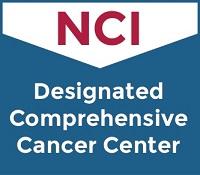Hormone Related Cancers
Program Co-leader: Arif Hussain, MD
Program Co-leader: Stuart S. Martin, PhD
See the complete list of Hormone Related Cancers investigators.
The Hormone Related Cancer (HRC) Program was established in 2004 to probe the common biology between malignancies of the breast and prostate gland. These malignancies, the most common in women and men respectively, are a major cause of morbidity and mortality. Investigators at the UM Marlene and Stewart Greenebaum Comprehensive Cancer Center (UMGCCC) have made key contributions to understanding hormone-related cancers, and these contributions have led to practice-changing discoveries, such as the development of the first aromatase inhibitors.
As major disparities exist in the incidence and outcome of hormone-related cancers in different populations, an overarching goal of the HRC Program and UMGCCC is to identify and reduce these disparities. The HRC Program addresses this through the design of clinical trials that reflect the high breast and prostate cancer prevalence in UMGCCC's catchment area and through translational studies that examine cancer subtypes that contribute to overall cancer disparities.
In pursuit of its scientific goals to reduce morbidity and mortality from hormone-related cancers, the HRC Program's investigations focus on three themes:
-
Therapeutic strategies against hormone-related tumors – Identify new agents to target malignancies that remain related to hormone manipulation.
-
Mechanisms of innate and acquired hormone resistance – Identify and target the mechanisms that confer de novo or acquire resistance to hormone manipulation.
-
Invasion and metastasis – Identify the mechanisms that promote tumor dissemination and the therapeutic strategies that target these mechanisms.
Highlights of the Hormone Related Cancers research program include the following:
Aromatase inhibitors to block estrogen synthesis were developed in this program. These agents are now used for both prevention and treatment of breast cancer. Novel androgen inhibitors for treatment of prostate cancer have been discovered and are being advanced to clinical trials.
Novel compounds have been identified that inhibit retinoic acid metabolism and appear to be promising agents for breast cancer therapy. Based on original discoveries from this program, studies are in progress to enhance MRI with spectroscopic measurements of citrate to identify areas of malignant prostate in patients. Two laboratories have identified novel proteins (EBP1 and PCDGF) that are overexpressed in breast cancer and in collaboration with the Experimental Therapeutics Research Program, lead compounds have been identified that target one of these. Cyclooxygenase expression is linked to more aggressive behavior in breast cancers and inhibitors are being evaluated in preclinical studies.
Studies of tumor-vascular biology are being conducted in three laboratories. Computer-assisted drug design has been employed to identify candidate therapeutic compounds and effective gene therapies are being developed to inhibit tumor angiogenesis.
Mechanisms of drug resistance are being elucidated and strategies developed to circumvent resistance to activation of alternative signaling pathways and apoptosis induction. Two immune-based therapies using vaccination to tumor-associated antigens have been developed in preclinical models and are now in early clinical trials.
Initiatives to understand the biology of tumor invasion and metastasis are examining the role of cytoskeletal components in cell motility and the role of proteases in invasion.
A Center of Excellence joint program of HRC Program members and investigators at the Johns Hopkins Sidney Kimmel Comprehensive Cancer Center is identifying genes associated with breast cancer metastasis and developing therapeutic agents to these new targets.
HRC program members and members of the Cancer Disparities and Intervention Research Program (CDIRP) are studying the factors affecting breast and prostate cancer disparities including differences in drug and citrate metabolism and gene expression patterns in diverse populations.


